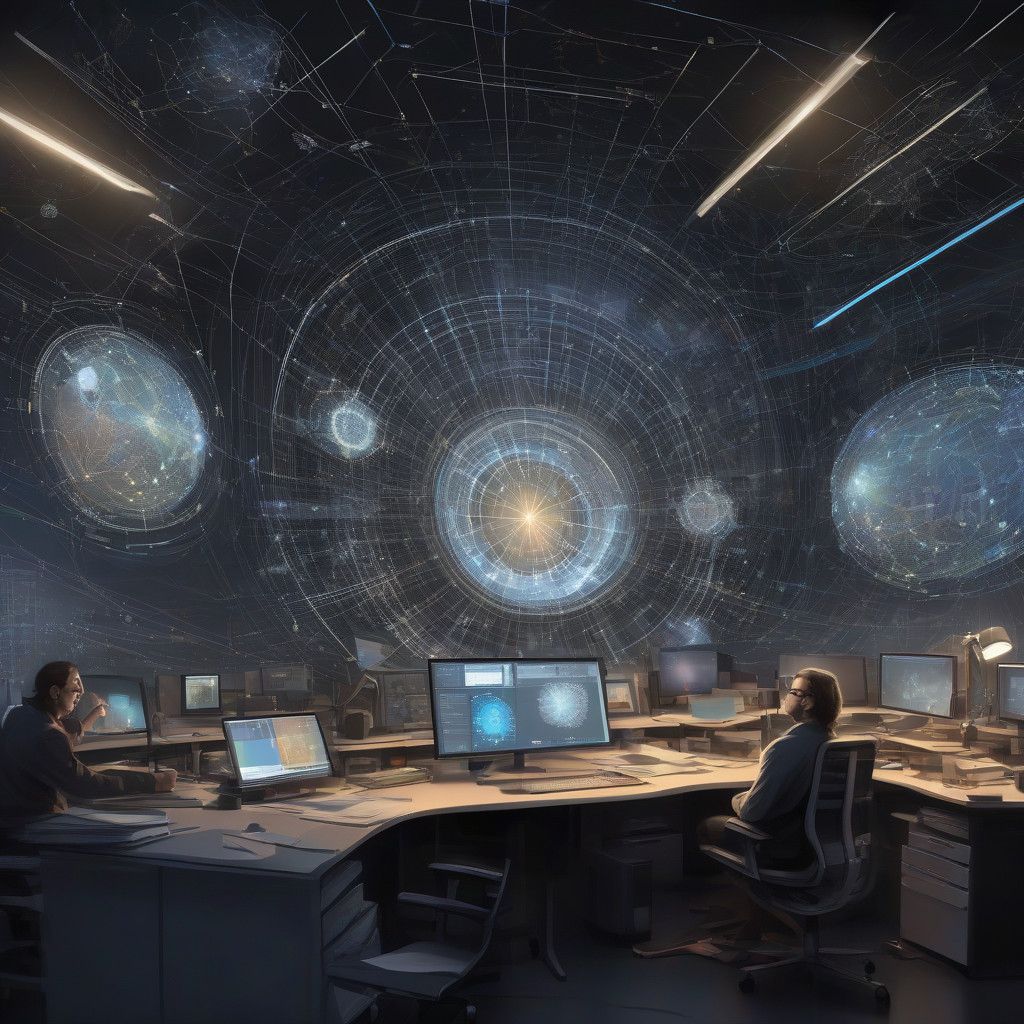The Higgs boson is a pivotal element in particle physics, crucial for our comprehension of mass and the fundamental forces governing the universe. Recent data released by the ATLAS collaboration enriches our understanding of this elusive particle, focusing not just on its characteristics but on its intricate role in the cosmos. Such advancements not only help in refining the standard model of particle physics but also pave the way for probing deeper enigmas, including dark matter, the imbalance of matter and antimatter, and the very beginnings of the universe.
In an exclusive interview with Katharine Leney from CERN, we explored the latest findings concerning the Higgs boson and their significance to both theoretical and experimental physics. CERN’s multifaceted strategy for probing the Higgs boson revolves around comprehensive and precise measurements. This meticulousness is essential, as it allows scientists to identify any new physical phenomena that may interact with the Higgs boson, even if these new entities remain elusive.
One of the key challenges faced in the study of the Higgs boson is the inherent uncertainties that affect the accuracy of measurements. Among these uncertainties, statistical uncertainty plays a significant role. The limited number of Higgs bosons produced means that clearer conclusions require a larger dataset. A fitting analogy is flipping a coin; with just a few flips, one cannot determine if the coin is fair, but as the number of flips increases, so does certainty.
Moreover, systematic uncertainty arises from the measurement processes within the detector that affect the overall accuracy of final results. In a recent mass measurement of the Higgs boson, the focus was on its decay into two photons. Utilizing Einstein’s equation \(E=mc^2\), researchers recognize that identifying the energy of decay products is vital for determining the Higgs boson’s mass. By enhancing the precision of photon energy measurements in the calorimeters—sections of the detector where photons interact—scientists have significantly reduced systematic uncertainty by a factor of four compared to previous measurements.
CERN’s continuous quest for improvement is evident in various projects, particularly in refining techniques for identifying particle sprays from the decay of beauty quarks. These complex processes have benefitted from the integration of machine-learning algorithms, enhancing the capacity to differentiate between relevant and irrelevant particle interactions. These advancements not only elevate the precision of measurements but also contribute to a more nuanced understanding of physics.
The Higgs boson holds a unique position in the standard model. Without it, mass would not exist as we know it, and the universe’s structure would be radically different. The study of the Higgs boson goes beyond mere measurement; it allows scientists to unravel the universe’s formative moments. After the Big Bang, the universe existed in a massless state before the occurrence of electroweak symmetry breaking—a phase transition that led to the Higgs boson interacting with particles and endowing them with mass. This interaction was crucial for the formation of matter, ultimately leading to the creation of stars, galaxies, and planets.
However, our understanding of post-Big Bang events is far from complete. While theoretical frameworks exist to explain matter-antimatter asymmetry, discrepancies with observational data persist. Furthermore, the mysteries of dark matter and dark energy remain largely unresolved, with speculation that dark matter could acquire mass through interactions with the Higgs boson.
At present, researchers are not only honing in on the self-interaction of the Higgs boson, but they are also utilizing current data from Run 2 of the Large Hadron Collider (LHC) to investigate further. The aim is to discern whether the universe is in a metastable state—apparently stable but potentially vulnerable to sudden phase transitions that might radically alter its fundamental laws.
The task is formidable; the LHC generates around 40 million collisions per second. Given this overwhelming volume, the necessity to identify which events merit recording is critical. Innovative use of machine learning algorithms is being applied to streamline this selection process. The latest enhancements are designed to better isolate Higgs boson events from background noise, maximizing the usefulness of the data collected.
Looking to the future, the LHC is currently in its third run, which will eventually yield a dataset twice as large as its predecessor. Following this phase, the facility will undergo significant upgrades, set to improve collision rates and detector technologies. By 2030, the High-Luminosity LHC (HL-LHC) will commence operations, significantly escalating the number of collision events and the potential for groundbreaking discoveries.
The ongoing European Strategy is instrumental in establishing the roadmap for future particle physics projects, including discussions surrounding the Future Circular Collider (FCC). This ambitious initiative may soon emerge beneath Lake Geneva, extending approximately 100 km. By connecting with ongoing research, the FCC seeks to facilitate deeper investigations into the Higgs boson and its potential relationships with yet undiscovered particles.
Research on the Higgs boson represents a remarkable blend of rigorous method and innovative thinking. The path ahead is laden with potential, as scientists leverage their findings to search for new physics, all the while acknowledging the significance of collaboration in such vast undertakings. The Higgs boson is not merely a scientific interest—it is crucial for comprehending our universe.
CERN continues to push the boundaries of particle physics, tracking the Higgs boson and its interactions, providing insights that may one day answer some of humanity’s most profound questions about existence and the universe.












